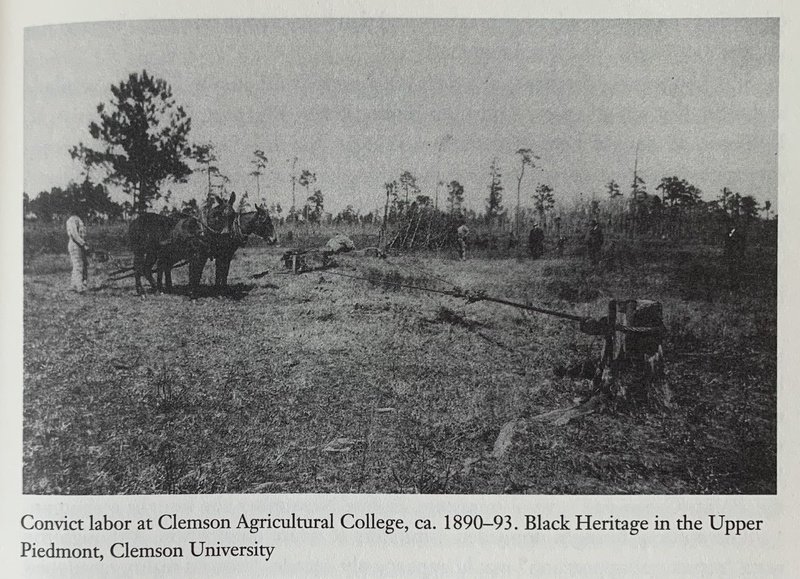Introduction
Nothing but a number, an artless statement, simplifies how black convicts, who built Clemson College, were less than valued by their white counterparts. Convicts lived barbarous slave-like lives, providing a means of labor through the system of convict leasing. Scholars have done much work to uncover profound truths about the use of convict labor in South Carolina. The scope of this project, concerning the use of convicts for labor, therefore, is institutional, not state-centered. It is an attempt to put within the confines of a thematic research collection, wherein a humanities scholar amasses in one place the necessary materials for a research project, a narrative of the history of leasing at Clemson College. It is concerned with both origination and methodology—of what happened, why, and why it matters.
The period of Progressive Reconstruction, which occurred in the American South after the Civil War, projected aid and possibility images. The Lincoln Administration collectively utilized the brute force of United States arms to pressure Southern states to adopt this opportunity image. Successfully ratified, the constitutional amendments, including the thirteenth, were put into operation, and the South was made to recognize them. But, upon the assassination of President Lincoln, Union troops received orders to withdraw from the South. Vice President Andrew Johnson, responsible for giving the withdrawal order, was inaugurated as President of the United States of America in April of 1865. Member of the Democratic party and southern raised, Johnson supported states' rights, having voiced his disagreement with Lincoln's 'preserve the union' platform. The removal of southern troops proved consequential, allowing strong southern white traditions to endure.
The South's ability to locate and enforce vague ambiguities in the thirteenth constitutional amendment, bartering to achieve economic stabilization, affected thousands of African Americans' lives. Conclusions drawn within this thematic research collection show the compliance of Clemson College to engage in the formulated process of convict labor, effectively growing a successful white corporation from the ground up.
This study opens, in part one, with an examination of the preliminary steps taken by the Clemson Board of Trustees to bring convict labor to the college. Part two details, once leasing is adopted, an overview of the use of the convicts by Clemson. In part three, the concentration is on the single most crucial question contemplated in this project: was convict labor virtually slavery, or more specifically, were the conditions of leasing at Clemson College similar to those imparted by whites on blacks during slavery? To answer this question, the focus is on context offered within secondary and primary sources. Background is provided in both Matthew Mancini's seminal study One Dies, Get Another and Dr. Jerome Reel's A High Seminary. The progression of convict leasing at Clemson College was recorded, and is articulated through, Clemson Trustees Minutes, President's Reports to the Board of Trustees, and the presidential records of Mell and Riggs. Part four, Clemson convict labor's legacy, shares the relevance of leasing as integral to both Clemson University and South Carolina history, directly advancing the creation of race as a social construct.
